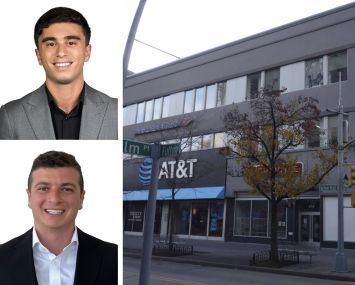Presented By: Buxton
How Consumer Data Can Help Property Owners Attract Medtail Tenants
Future of Retail Leasing brought to you by Buxton

As the health care industry evolves, medical and wellness providers are increasingly choosing to move into retail space. This growing retail model, known as “medtail,” can be an exciting addition to a traditional retail environment and help owners and developers fill vacancies and generate foot traffic.
Partner Insights talked to medtail experts Bill Stinneford, senior vice president of strategic sales, and Nikki Viner, vice president of strategic accounts, with Buxton about the Fort Worth, Texas-based company’s consumer intelligence platform, which provides the data retail owners and developers need to make smarter leasing decisions and help identify the best medtail tenants for their properties.
Commercial Observer: Why are health care organizations gravitating to retail centers?
Nikki Viner: It’s about consumerization and the ability to be where consumers want you to be. With additional players like Walgreens and CVS coming in for specialty and retail health, traditional health providers have to change their game in order to compete.
Bill Stinneford: The way consumers make health care decisions is evolving. They can pull out their smartphone and look for the nearest or best-rated health care, be it urgent care, dental or even specialties like orthopedics and sports medicine.
In many ways, health care is becoming more direct-to-consumer, so being part of a retail center or near one not only makes it convenient for patients, but also top of mind. For example, if an urgent care is located next to a retailer where potential patients frequently shop, then every time they come to that center, they see the urgent care’s signage, and that impression — the number of times something is seen— builds up and eventually leads to more business. Health care is an infrequent need, but when that need occurs, if there’s an urgent care right next to the grocery store they visit weekly, that visibility helps people make those decisions.
For property owners and developers, what is desirable about health care retail tenants?
Stinneford: As a country, we’re paying more attention to prevention, meaning that health care isn’t just treating you when you’re sick, but also keeping you healthy. There are so many health care businesses that focus on prevention, and along with those businesses, there’s an opportunity to build health-oriented retail centers or complexes. So, what are some co-tenants that align with that? If a patient visits this center for a preventative checkup, is there also an opportunity for health food, vitamins, lab testing or a fitness center? There are so many businesses that could fit into that sort of retail center.
Viner: It’s also worth mentioning the growing popularity of alternative medicine and health care — things like massage, chiropractic medicine and acupuncture. Those are ideal medtail uses.
How does Buxton’s technology platform help owners and developers identify the best health care tenants for their retail space?
Stinneford: For nearly 30 years, we’ve worked with retailers and health care organizations, building predictive solutions that show the forecasted potential of any location to help them make real estate decisions. Our data offers more than just demographic snapshots; it delves into who people are as health care consumers, with lifestyle and psychographic information.
Owners and developers can use this same data to figure out if their center is appropriate for medtail. They can share that information with potential health and wellness tenants to get them excited about coming into their center. Or, if the data shows the business isn’t viable, then they know not to waste everyone’s time.
Our data helps landlords stand out by being able to say to prospective tenants, “I’ve studied your business, and I can show you what works. Just look at this detailed report.”
While that may not guarantee that a health care company signs a lease with you, it sure puts you ahead of the pack.
What types of data do potential health care tenants generally find most compelling?
Nikki Viner: It starts with the consumer. Does your center attract the right types of people — those who need this particular service and those who would choose that brand? Then, we have ZIP code data for consumers that drills down into outpatient demand by service line, for example, cardiology, allergy, gynecology, etc. We have the ability to predict downstream revenue and provide a detailed picture of the competition.
Historically, the biggest impediment to medtail leasing was a disconnect between the rental rates health care tenants were used to paying and the expectations of landlords. Does that disconnect still exist? And if so, how can landlords and health care tenants come to an agreement on this?
Stinneford: For health tenants, retail space is more expensive than a traditional medical office building, and there is a bit of discomfort for those health care companies that are doing medtail for the first time. But retail offers a real benefit for patient acquisition, which provides a tremendous return on investment.
If an owner is trying to recruit a medical concept to their center and that concept is new to medtail, the owner needs to talk about the benefits of being there — how the health care provider can’t afford not to be in that center because all their competitors will be in those types of centers. If you’re hidden behind a hospital, and no one knows you’re there, you’re going to lose.
We’re seeing private equity-backed specialty and retail health concepts taking the types of properties we’re talking about. They’ve come into health care in a huge way, and they are for-profit. So, if you are a health care business that’s not operating that way, you’re going to be in trouble.
It’s very competitive, and there will be winners and losers. And the businesses that lose, frankly, will be the ones that don’t take the time to understand the data we’ve talked about today and don’t use it to their advantage.
View more articles on Retail Leasing here.


